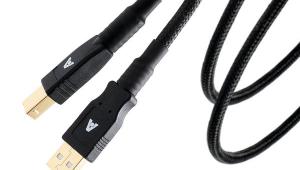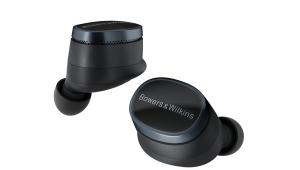On-demand music






Group Test: Music streaming services
October 2018 marks just 10 years since Spotify launched its first streaming service in the UK. In this short time it has revolutionised the way in which we buy and listen to music. At first, the idea of music streaming was attractive for the convenience it offered. Mesmerised by the number of songs and albums readily available at the tap of a touchscreen or click of keyboard – and the musical discovery our searches take us on – trawling through multi-million-track libraries became a nostalgic and addictive journey that has changed how many of us consume music forever.
Better than CD?
As hi-fi fans, not everyone was happy with the lower-than-CD quality of Spotify, but in recent years streaming services have upped their game. With better broadband data speeds now being fed into many UK homes, the arrival of options that offer lossless audio has changed the basic premise of a streaming service from something that augmented our existing music collections to something that could notionally replace it. Now, as we approach a decade since the first platform appeared, streaming services are moving to the next level with several offering ‘better-than-CD’ hi-res digital audio files at 24/96 and (in the case of Qobuz Sublime) beyond.
Of course, it is all well and good to offer the promise of ‘better-than-CD’ quality, but do these hi-res services live up to our expectations? Just how much better do they sound than their less data hungry and often more affordable rivals? To establish this, we’ve lined up a sextet of popular streaming services. To find out which offers the sweet spot between convenience and audio Nirvana for serious hi-fi fans, read on...
Critical listening is carried out using the desktop app of each service and levels are carefully matched. Four main tracks common to each streaming platform are used for the main listening test. Additional tracks are used in extended listening to build a complete picture of a streaming service's sound.
 Noah Gundersen
Noah Gundersen
White Noise
Number One Hit Of The Summer
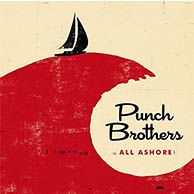 Punch Brothers
Punch Brothers
All Ashore
Three Dots And A Dash
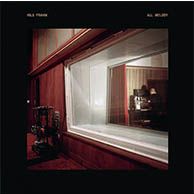 Nils Frahm
Nils Frahm
All Melody
My Friend The Forest
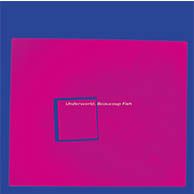 Underworld
Underworld
Beaucoup Fish Remastered
Push Upstairs
To listen to these test tracks and a selection of other favourites follow the Hi-Fi Choice playlist on Tidal.
 Amazon Music Unlimited £8/month
Amazon Music Unlimited £8/month
In terms of on-demand content, Amazon has been more active with its Prime TV service than its music offerings. The original Prime Music streaming service (HFC 414), which offered a limited library of tracks included in the price of a Prime subscription, has been augmented by Music Unlimited and claims 40-million tracks for an additional cost. With one eye on consumer loyalty, Amazon reduces the £9.99 monthly cost to £7.99 for Prime members, and further promotional offers are often available.
The service itself uses compressed files, but Amazon won’t reveal any information about what format or bit-rate, instead claiming that multiple bit-rates are used. There are no settings to directly stream to a USB device in the desktop app, although there is a volume control that is set at 50 percent when you install the desktop app.
Despite the service’s name, features are relatively limited but one is unique. For owners of Echo or Echo Dot (HFC 421) speakers, Music Unlimited is the service Alexa accesses for its on-demand music content. There is a selection of curated content in the form of playlists and genre-specific radio stations, but it doesn’t appear to be responsive to any listening preferences. It is also possible to buy music directly from Amazon within the app, but only in compressed form and it feels like Amazon has missed a trick not taking people to its full website and giving them all the format options. The desktop app is attractive and feels stable and slick in regular use and the search function is effective.
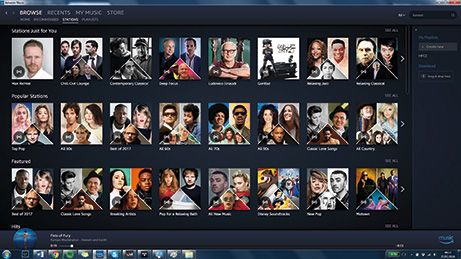 Sound quality
Sound quality
Once the volume level has been set to the full available output, Music Unlimited puts in a respectable performance. Even with levels scrupulously equalised, it never feels like the most potent or boisterous of performers, but there is an agility and sense of refinement that helps the Gundersen track to sound controlled and refined. The vocals lack some of the texture and detail that’s available elsewhere, though, and there’s a slight lack of space to the presentation. The smaller scale nature of Three Dots And A Dash doesn’t suffer from this, though, and the refinement that Unlimited seems to naturally possess is useful at avoiding any stridency with the violin. There is still a sense of congestion when the piece opens up to its fullest extent, however.
The very sparse Nils Frahm recording is less prone to sounding crowded and the tone of the piano is highly convincing with a pleasing lack of stridency or sibilance. The details of Frahm moving in front of the instrument are reasonably well conveyed, but there is a slight and consistent lack of space and three dimensionality to the whole experience that really only makes itself felt when listened to in comparison with other services.
The manner in which Unlimited handles Push Upstairs is disappointing and some way adrift of its rivals. The lack of low-end punch is much more apparent here and there simply isn’t the drive and impact that’s needed to make the piece sound entirely convincing. The sense of congestion when the track reaches its climax is also more apparent here than on the other services. Emerson’s high-speed vocals are harder to follow and lack clarity. Once again, however, there is no sign of harshness or aggression to the upper registers.
 Deezer Hi-Fi £20/m
Deezer Hi-Fi £20/m
French streaming service Deezer has been around almost as long as Spotify and has been active in the UK for some time now. The company has recently added its HiFi tier, which makes it the first streaming service to add lossless streaming as opposed to launching with it. This means that Deezer’s claimed library of 53-million tracks is now available in FLAC format at 16/44.1. Unlike the other lossless services here, Deezer is not offering high-resolution streams as yet, but the £20 monthly bill remains competitive.
It has been improving its service over time and has significantly changed from the version we first looked at in HFC 396. As well as lossless streaming, the big attraction is its Flow learning playlist which examines your listening habits and assembles themed playlists based on them. Give it some initial data to work with and the results are impressive with some interesting new content worked in with material it knows you’ve been listening to recently.
The desktop app is clear and well laid out. The search function works well and the related artist content is well edited, too. The curated content outside of the Flow playlist offers a safe rather than spectacular selection, but there is usually something interesting on the main page at any given time. One area where it is at a slight disadvantage is that there is no USB audio management in the desktop app. This means that listening is subject to other sounds being generated by your computer and any other unwanted processing it might undertake.
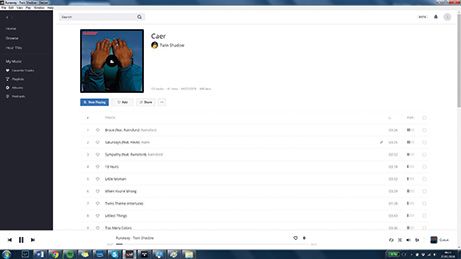 Sound quality
Sound quality
The effect of going lossless on Deezer’s performance isn’t always the clear-cut improvement that we might have hoped it would be, but it is generally positive. It reproduces the Gundersen recording with energy and a commendable sense of three dimensionality. This means that there is no appreciable sense of congestion to the midrange, even at the busiest points of the song, while vocals are well defined and have a pleasing sense of detail and realism to them.
The instruments in Three Dots And A Dash are handled beautifully, too. There is a presence and simple energy to the plucked strings that some compressed services struggle with and the relationship of the musicians relative to one another is something that is innate to the performance. One area where Deezer seems to be strong is that there is a commendable level of timing and engagement to it, which makes for a pleasing long-term listen.
When given the high-quality but extremely simple My Friend The Forest, Deezer doesn’t really raise the performance above the compressed services, however. The piano has a pleasing sense of weight and manages to sound reasonably natural, but the feeling of Frahm being there is limited more to noise across the tops of the keys than the physical being operating the piano. The space that performance is in is well captured, though.
In keeping with some of the other services here, Deezer struggles a little with Push Upstairs. The good news is that compared with some of the more lightweight performances here there is a decent sense of heft to the bass and an impressive amount of detail as well, although Emerson’s vocals have a lack of definition that makes following them a little harder than it really should be. The overall impression isn’t unpleasant, but it suffers on direct comparison with some rivals.

 High Res Audio Streaming £180/year
High Res Audio Streaming £180/year
As the newest music streaming service in this test, High Res Audio is part of the download music store of the same name. Perhaps because of this, the ethos of the site is rather different to the others here. Instead of a library of tracks running into millions, HRA claims “over 30,000” albums, all of which are available in 24/44.1 resolution or higher. This is a significantly smaller choice than any other service – and means that the
Group Test material has been selected based on what’s available here first.
Access is via a desktop app and downloads and installs without incident once you have located it. The layout and functionality is sound with an attractive colour scheme and well integrated shop functions that take you straight to an online store to buy and download your album. The streaming service has some interesting touches, such as the very specific genre and sub-genre sorting functions that result in exactly the style of music you’re looking for. Against this, the curated content is fairly limited. There are new release playlists for various genres and some additional content, but it doesn’t adapt to your listening preferences in the way some rivals do.
The good news is that the desktop app is equipped with USB audio management settings, although they’re not especially easy to find in the controls at first. This bypasses the computer’s audio management systems and sends the audio signal straight to a connected DAC to ensure performance is as good as possible.
 Sound quality
Sound quality
With a direct connection to the Hugo 2 established, HRA puts in a very good account of itself. With access to a 24/44.1 version of Number One Hit Of The Summer the differences over the lossless version aren’t huge, but the bass response feels much fuller and more detailed and Gundersen’s vocals make useful gains in both the texture and detail present in them. The principle impression is that the whole recording is simply more effortless. With Three Dots And A Dash – which oddly is also at 24/44.1 despite it also existing at 24/96 – the way that HRA avoids the midrange congestion prevalent elsewhere and really emphasises the richness and tonal quality of the instruments is fabulous, with the violin in particular being superbly delivered.
The HRA version of My Friend The Forest is 24/96 and there is a demonstrative jump in the space and depth that’s present in the recording. Frahm’s movement across the piano, the motion of his hands on the keys and his breathing are all stitched into the recording in a well-handled and very self-explanatory way – beyond any single qualitative improvement, it simply makes the track easier to listen to as information is conveyed naturally and without over emphasis on any particular area of the recording.
This effect is also present with Push Upstairs. The HRA version benefits from that same sense of space as the other tracks. Emerson’s vocals are much more effectively extracted from the midrange and this makes them easier to discern and follow. The bass response feels appreciably deeper and more detailed than the standard-resolution version of the album. There isn’t quite the sense of urgency and timing, though, but as there seems to be more than one hi-res master available for this album, it’s just possible that this is a peculiarity of this particular version.
 Qobuz Sublime+ £350/year
Qobuz Sublime+ £350/year
Founded as a lossless streaming service in 2007, Qobuz offers access to its 16/44.1 library for a £20 monthly fee. In addition to this, its Sublime tier bundles a purchase discount on hi-res titles from its store, while Sublime+ (as tested here) gives both the download discount and direct access to streaming hi-res files via its apps. Qobuz claims a library of “over 40-million tracks” with an impressive 70,000 of those available in better-than-CD hi-res, which varies between 24/44.1 and 24/192 FLAC. The catch is that Sublime+ is a significant commitment in terms of price – there is no monthly subscription option.
The desktop app has not changed significantly since we looked at it in HFC 414, but the basic design and layout is easy to use although it is the most processor intensive of all the desktop apps here. The search function is effective and the functionality around related artists and additional information is well organised and a useful discovery tool. One area where there has been an improvement is curated content. Qobuz has clearly put more effort into the generation of new playlists and there is a wider spread to choose from, although it doesn’t adapt to your listening habits.
One significant advantage shared with Tidal is that Qobuz allows for direct hook up of the app with your USB audio device, either by a simple direct connection or, where supported, an ASIO setup. This means that you can use Qobuz without any of the standard operating sounds of your computer and without the effect of its sound management systems. The only minor detractor to this is that the ASIO playback with the Chord Electronics Hugo 2 DAC induces two crashes, so direct playback is used for testing.
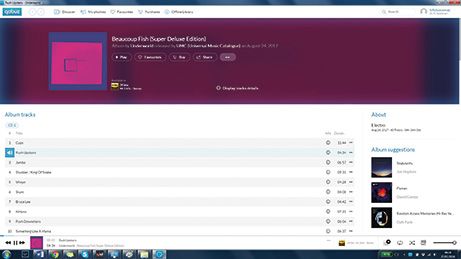 Sound quality
Sound quality
Sublime+ provides access to a 24/44.1 master of Number One Hit Of The Summer and combined with the direct connection to the Hugo 2, the performance is the best in the test. There is a healthy dose of space and refinement to the overall presentation that makes listening to it a little more relaxing than with some of the other services here. This is partnered with a sense of timing and immediacy that isn’t always present in the group. The underlying time signature of Three Dots And A Dash (which is available as 24/96) is brilliantly captured and underpins a presentation that is tonally vivid and exceptionally three dimensional with a genuine sense of the performance as a whole.
This same sense of space and placement is used to underpin Nils Frahm (here in 24/96) to superb effect. Once again, there is a real feeling that the piece is a duet between Frahm and the piano rather than a simple exercise in playback. His presence in the recording is tangible and extremely well realised with truly lovely weight and decay to the struck notes. The only slight weakness in this otherwise impressive display comes with Push Upstairs. The 24/44.1 master version available here doesn’t seem to have the same punch and drive to the low end that the higher resolution version available elsewhere brings. This means that although the timing and general sense of attack in the music is relayed to good effect, it lacks the punch to be truly convincing. Further up the frequency response the news is rather better with vocals sounding clear and easy to follow, while there is no sense of harshness to the upper registers.
 Spotify Premium £10/month
Spotify Premium £10/month
Celebrating its 10th anniversary in the UK, Spotify is still the largest service by number of subscribers and the only one that continues to offer an advert-supported free tier. In a sector where relentless technical updates seems to be the order of the day, it is curious just how little it has changed. The Premium tier remains £9.99 a month and offers a library of “over 40-million” tracks encoded in Ogg/Vorbis at 320kbps. Rumours of a lossless version in beta form abound, but there is nothing in the UK yet. Like other compressed streaming services, it is reliant on your computer’s sound management to work with USB DACs.
The desktop app is stable, easy to navigate and everything works as you’d expect. The only real annoyance is that the album listing for an artist is still in a single scroll, which means if they’re prolific a great deal of scrolling is required to find the one you’re after.
In terms of curated content, though, Spotify continues to excel. The Discover Weekly playlist is a brilliant way to uncover new artists and the Your Daily Mix options are no less impressive. The more you use Spotify, the better it gets at finding you new music, which further encourages you to use it. Against this, the generic playlists are a little uninspired, but you probably won’t use them. It is also worth noting that Spotify is great at offering deals. Depending on your phone provider, bank or even online newspaper subscription, you might find you can access its Premium tier for considerably less.
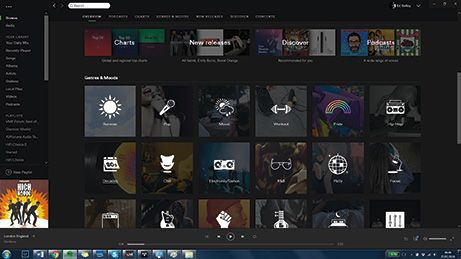 Sound quality
Sound quality
Of all the services in the group, Spotify is the one that imparts the most character to the way it reproduces the test material and whether or not you like this will define just how you get on with it. There is an immediacy to Number One Hit Of The Summer that is readily apparent. The emphasis appears to be on the bass line and overall timing, which gives the track an urgency that’s often missing in rivals. This doesn’t significantly affect the overall presentation of the upper registers, which sound reasonably rich, if lacking in some of the fine detail available elsewhere. This has more of an effect on the Punch Brothers track, which lacks some of the space and delicacy that other services can achieve. Once again, though, this is partially redressed by that same sense of propulsive force to the overall timing.
With My Friend The Forest, which is rather less dependent on this perceived timing and energy, the results are less satisfactory. Frahm’s actions are still clearly audible, but there is far less of a sense of him interacting with the piano and the instrument itself feels a little on the soft side. Happily, there is a pleasing feeling of space to the recording and it is free of any harshness across the upper registers. By contrast, Push Upstairs is one of the better performances in the group. It positively hammers along with plenty of bass extension and that same lightness of touch in terms of the timing and drive, and with a piece of music that is as reliant on this energy the effect is very pleasing. As an added bonus, the upper registers avoid congestion or hardening up and the vocals are reasonably distinct from the main body of the mix, although some of the high-resolution services are better in this regard.
 Tidal HiFi £20/m
Tidal HiFi £20/m
As the first lossless service to launch in the UK, Tidal has been influential on other platforms and its decision to bring hi-res Master content to its desktop platform hastened the move to hi-res streaming becoming a competitive area. Tidal doesn’t specify how many Master albums there are, but they exist as doubled-up additions of the 55-million track library and use the MQA (Master Quality Authentication) audio origami process to pack and unfold digital content for easier streaming. If you don’t have an MQA-enabled device, the app will perform the ‘unpacking’ for you.
The desktop app is well implemented with a logical layout and commendable levels of stability. Like Qobuz, Tidal can make a direct connection to your USB DAC, bypassing your computer’s audio management software and improving performance. If you have an MQA-compatible product, you can hand processing duties over to that as well.
Tidal does not offer much in the way of personally targeted content and it won’t learn and adapt to your musical tastes. The related artists feature is good and well thought out, but is about the summation of it steering your personal choices. Curated content is much stronger, with playlists around more themes and genres than any other service and such is the variety of material, it is highly likely that something will appeal to you. When you throw in the comprehensive video content and decent selection of podcasts and a small, little-known online download store, Tidal looks like an excellent package.
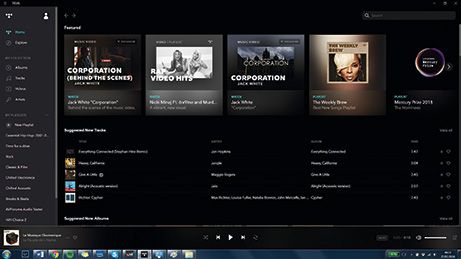 Sound quality
Sound quality
One slight oddity of Tidal Masters is that the sample rate isn’t displayed anywhere on the app and, despitea hi-res equivalent being available elsewhere, Tidal has a standard 16/44.1 version of Number One Hit Of the Summer. In spite of this, the performance is one of the best here. There is an absence of congestion and a very even performance across the frequency response, which makes it easy to listen to and enjoy. There’s also plenty of fine detail and Gundersen’s vocals in particular are packed with them. This same even handed and enjoyable approach ensures that Three Dots And A Dash (24/96) is energetic and refined without being over smooth. The lead violin in particular is superbly handled and has a realism that can really only be appreciated listening in relation to some of the other services here.
This tonal realism and unforced space means that Nils Frahm (also 24/96) is handled superbly. Frahm’s movement in front of the piano is tangible and laced with tiny nuances that even some of the other hi-res competitors seem to miss. The piano is weighty, textured and the struck notes have a fantastic sense of decay to them. Compared with HRA, there is a fractional lack of sweetness but the effect is still superb. It is with Push Upstairs that Tidal truly pulls out a gap. The Master flags as a 24/88.2 sample rate and it is joyously ballistic. The bass response is deep, controlled and fast on its feet and the midrange is opened out in a manner that no other service here can achieve. Emerson’s vocals are extremely easy to follow and there is a nuance and inflection that leaves the others sounding leaden in comparison. Walking a neat balance between being exciting and avoiding unwanted brightness isn’t always the easiest thing to do, but Tidal seems to achieve it extremely well.
Conclusion

 Deezer HiFi has evolved into a very competitively priced lossless service, and its Flow learning playlist is genuinely useful as a means of discovering new music. With better USB audio management, it could be a very good streaming offering indeed.
Deezer HiFi has evolved into a very competitively priced lossless service, and its Flow learning playlist is genuinely useful as a means of discovering new music. With better USB audio management, it could be a very good streaming offering indeed.
 High Res Audio is a slightly different proposition. It offers sparkling sound quality from a well thought out desktop app. The catch is that the limited library, lack of mobile apps and third-party support do count against it. Although it is early days, it should be applauded for its hi-res ambitions thus far.
High Res Audio is a slightly different proposition. It offers sparkling sound quality from a well thought out desktop app. The catch is that the limited library, lack of mobile apps and third-party support do count against it. Although it is early days, it should be applauded for its hi-res ambitions thus far.
 Spotify by contrast is chasing a slightly different part of the market. Its adherence to low data files will be a deal breaker for many, but the compatibility and flexibility it offers is hard to overlook. A lossless Spotify service would be a serious challenger.
Spotify by contrast is chasing a slightly different part of the market. Its adherence to low data files will be a deal breaker for many, but the compatibility and flexibility it offers is hard to overlook. A lossless Spotify service would be a serious challenger.
 Qobuz Sublime+ is the most all-round accomplished streaming service currently available. It covers everything from convenient mobile listening to serious high resolution, its excellent apps and the discount available on the download store are also potentially useful. There is no escaping that with a £350 a year up-front outlay and no monthly subscription option for this particular tier, it can look expensive next to rivals. A tier with access to hi-res, but without the download discount might be a different story and tip the winning balance here.
Qobuz Sublime+ is the most all-round accomplished streaming service currently available. It covers everything from convenient mobile listening to serious high resolution, its excellent apps and the discount available on the download store are also potentially useful. There is no escaping that with a £350 a year up-front outlay and no monthly subscription option for this particular tier, it can look expensive next to rivals. A tier with access to hi-res, but without the download discount might be a different story and tip the winning balance here.
 Winner
Winner
Since we last tested the service, Tidal has added hi-res, tweaked some functionality and still offers the best curated content. That it has done all this without increasing its prices arguably widens the gap to its nearest competitor. It remains the class leader...
| Amazon Music Unlimited | Deezer HiFi | High Res Audio Streaming | Qobuz Sublime+ | Spotify Premium | Tidal HiFi | |
|---|---|---|---|---|---|---|
| Type | Music streaming/ store | Music streaming | Music streaming/store | Music streaming/store | Music streaming | Music streaming/store |
| Format/bit-rate | Multiple bit-rates | FLAC/1,411 | FLAC/4,608 | FLAC/1,411 | Ogg Vorbis/320 | FLAC/1,411 & MQA |
| Library | 40-million tracks | 53-million tracks | 30,000 albums | 40-million tracks | 40-million tracks | 55-million tracks |
| Free trial | 30 days | 30 days | 7 days | None | 30 days | 30 days |
| Website | amazon.co.uk | deezer.com/en | highresaudio.com/en | qobuz.com | spotify.com | tidalhifi.com |
Full Group Test appeared in September issue HFC 440
 |
Inside this month's issue:
Ruark R610 music system and Sabre-R standmount speakers, PMC twenty.23i Active, floorstanders, English Acoustics Downton preamplifier, Bluesound NODE ICON preamp/streamer, Ortofon Concorde Music Blue MM cartridge and much, much more
|






